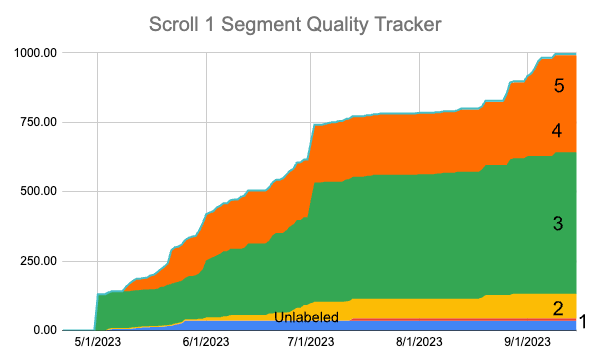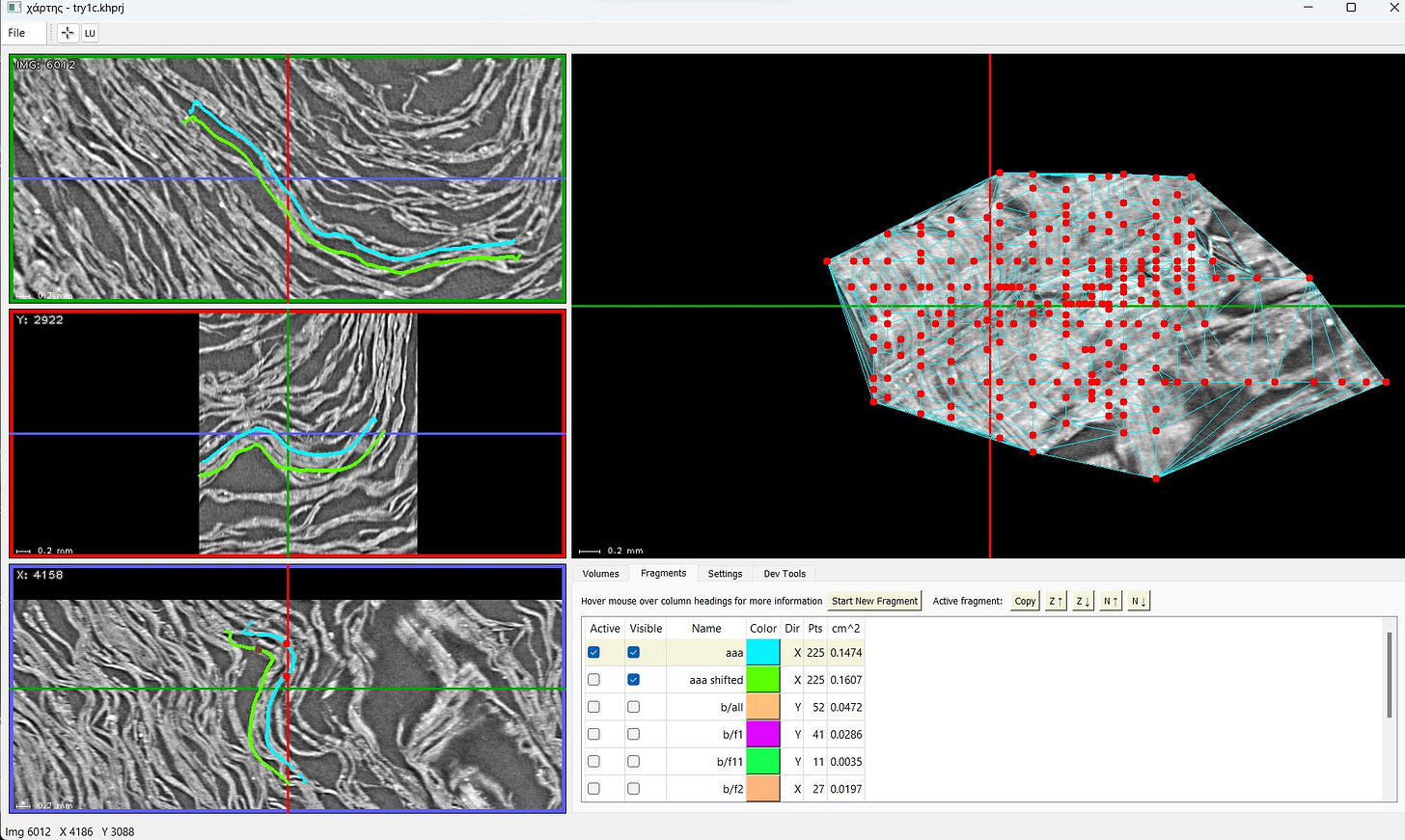When we announced the Segmentation Tooling 1 prize winners, we were almost at 500 cm2 of segments, but we had run into a snag: all the low-hanging fruit was gone, and we needed better tooling to segment harder areas.
In addition, we wanted larger segments, in order to increase the chance that a segment had enough continuous letters on it that it would be useful for the First Letters Prize.
The community really came through with great tooling, and we’re happy to announce that we just recently crossed the 1000 cm2 threshold! You can find the charts below in the Segment Directory.
The segmentation team also started tagging segments with a quality score 1-5, with 5 being the highest quality.
They can also be viewed in volume-viewer and the new segment-viewer (specifically for the segmenting team), which was one of the winning submissions.
Winners!
This post may feel like a bit of a deja-vu of the last time, with a lot of the same contestants having iterated on their previous work. But we also welcome some new entrants, so let’s start there:
VA Sheet Tracer by Trevor, Tom, Babak, and Boaz: $10,000
This new team iterated on VolumeAnnotate by Moshe Levy (a previous winner), making drawing a lot easier and faster. Click-click, and it interpolates many points in between! They iterated closely with the segmentation team to make sure their improvements were actually useful.
Extremely Fast Segmentation by Julian Schillinger / @RICHI: $10,000
Julian improved the speed of his segmentation algorithm by 100x. This algorithm has been used a lot by the segmentation team, and this is already saving them heaps of time. In addition, Julian added many more quality-of-life features, such as support for viewing multiple segments at once:
Khartes by Chuck / @khartes_chuck: $10,000
Another previous prize winner, Chuck has been improving on his incredible segmentation tool with real-time surface volume visualization, with tons of improvements. From support for loading and saving .obj files, to all sorts of hotkeys, and incredibly extensive tutorials, Khartes has grown into the main tool for super-high-quality segmentation.
CT scanning campfire scrolls by Ahron Wayne / @WayneWayneHello: $5,000
Ahron has been a fixture in Discord, chronicling his adventures in creating and CT-scanning his own scrolls in order to create data with known ground truth. He has worked closely with the segmentation team to map these scans. These efforts may prove critical in understanding different features that we see in CT-scans during both segmentation and ink detection.
Segment-viewer by Yao Hsiao / @Yao_Hsiao and Dalufishe / @Dalufish: $5,000
Yao and Dalufishe have been iterating on segment-viewer, in collaboration with the segmentation team, making it more useful in everyday use. For example, it now has adaptive zoom, and the ability to click segments to identify them. Also notable is their more experimental work on the Vesuvius Challenge Whiteboard — we’re curious where they take that idea.
Ilastik integration by Santiago Pelufo / @spelufo: $5,000
Our final prize is for Santiago’s work on integrating our data with existing tooling, in particular ilastik. This promising approach builds on out-of-the-box components to automatically generate 3D meshes of the gaps between papyrus layers.
Conclusion
Many thanks to the contestants for putting in the hard work to make such great submissions again. Things have been moving quite rapidly lately, and we’re extremely excited about what’s to come. We won’t quite announce a new progress prize yet, but keep an eye on this newsletter and Discord!











